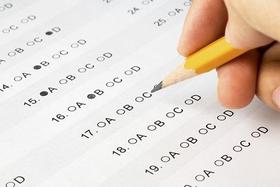The Kalamazoo Psychiatric Hospital is the largest mental health institution in Michigan. It was built under the Kirkbride Plan.
Quick Stats (2025)
- School Type: Special education school
- Grades: Inquire with school
- Source: National Center for Education Statistics (NCES), MI Dept. of Education
School Overview
School Type
Grades Offered
n/a
Total Students
2 students
Total Classroom Teachers
n/a
Year Founded
1859
School Rankings
Student : Teacher Ratio
n/a
17:1
American Indian
(21-22)n/a
1%
Asian
(21-22)n/a
3%
Hispanic
(21-22)n/a
9%
Black
(21-22)n/a
18%
White
(21-22)100%
64%
Hawaiian
(21-22)n/a
n/a
Two or more races
(21-22)n/a
5%
Participates in the National School Lunch Program (NSLP)
Yes
School Statewide Testing
School District Name
Source: National Center for Education Statistics (NCES), MI Dept. of Education
Profile last updated: 02/09/2025
Frequently Asked Questions
How many students attend Kalamazoo Psychiatric Hospital?
2 students attend Kalamazoo Psychiatric Hospital.
What is the racial composition of the student body?
100% of Kalamazoo Psychiatric Hospital students are White.
What school district is Kalamazoo Psychiatric Hospital part of?
Kalamazoo Psychiatric Hospital is part of Michigan Department Of Community Health School District.
In what neighborhood is Kalamazoo Psychiatric Hospital located?
Kalamazoo Psychiatric Hospital is located in the Western Michigan University And KRPH neighborhood of Kalamazoo, MI.
School Reviews
Review Kalamazoo Psychiatric Hospital. Reviews should be a few sentences in length. Please include any comments on:
- Quality of academic programs, teachers, and facilities
- Availability of music, art, sports and other extracurricular activities
Recent Articles

Segregation in K-12 Education: Colonial Era
Explore the origins of educational segregation during the colonial era and the differential treatment of Native American, African American, and white students. This article delves into the historical context, policies, and societal attitudes that shaped early education in colonial America, highlighting the disparities and injustices that persisted within the schooling systems of that time.

Students of Color Disproportionately Disciplined in Schools
Research shows that students of color face a disproportionate number of disciplinary actions in U.S. public schools. Learn about these disparities, as well as the policies that fuel them. Also learn about suggested measures to address this problem.

School-to-Prison Pipeline Persists Despite Local, State and National Efforts
Inadequate funding and resources for schools, harsh zero-tolerance discipline policies, police presence in public schools, and de facto segregation continue to create school environments in which poor and minority students have little chance of succeeding. The result is a continuation of the school-to-prison pipeline that has been commonplace in the American education system for decades, despite federal, state and local efforts to curb the problem.





